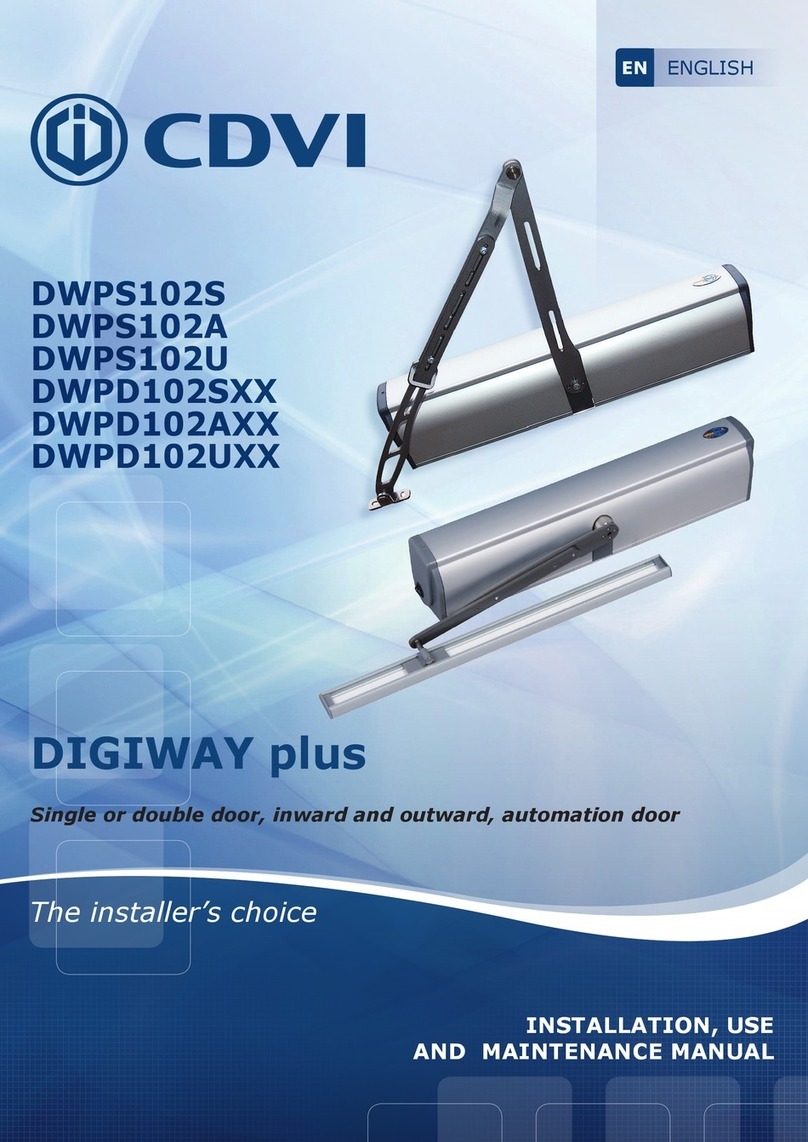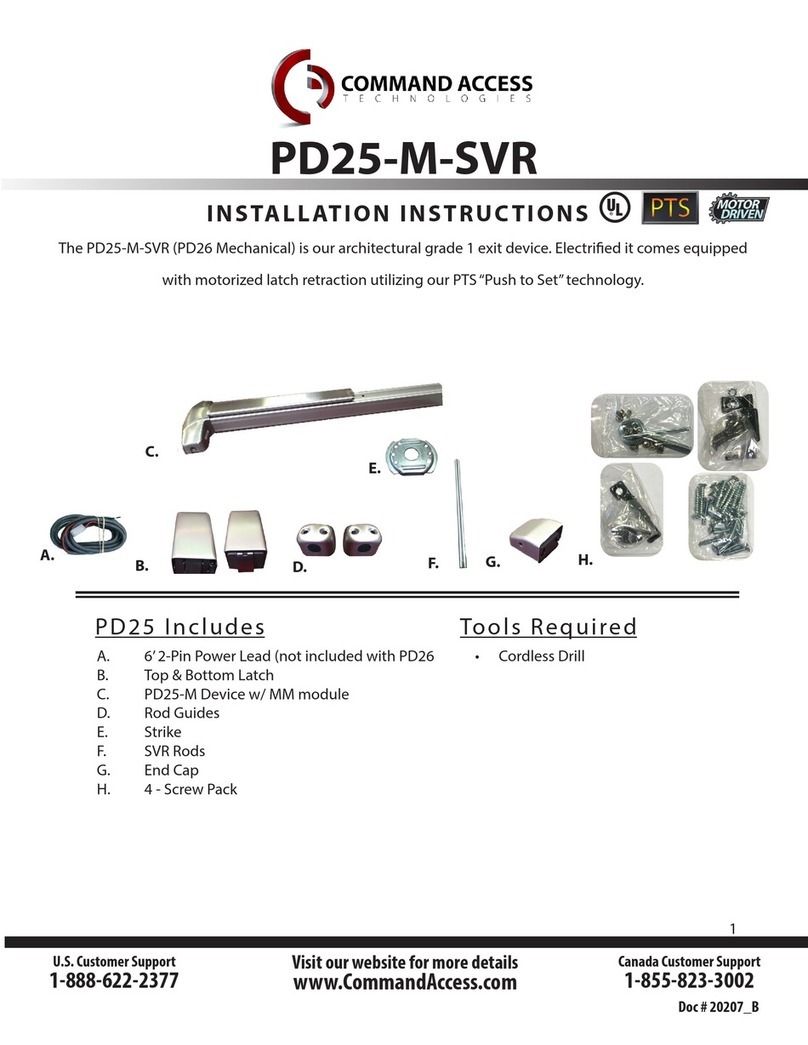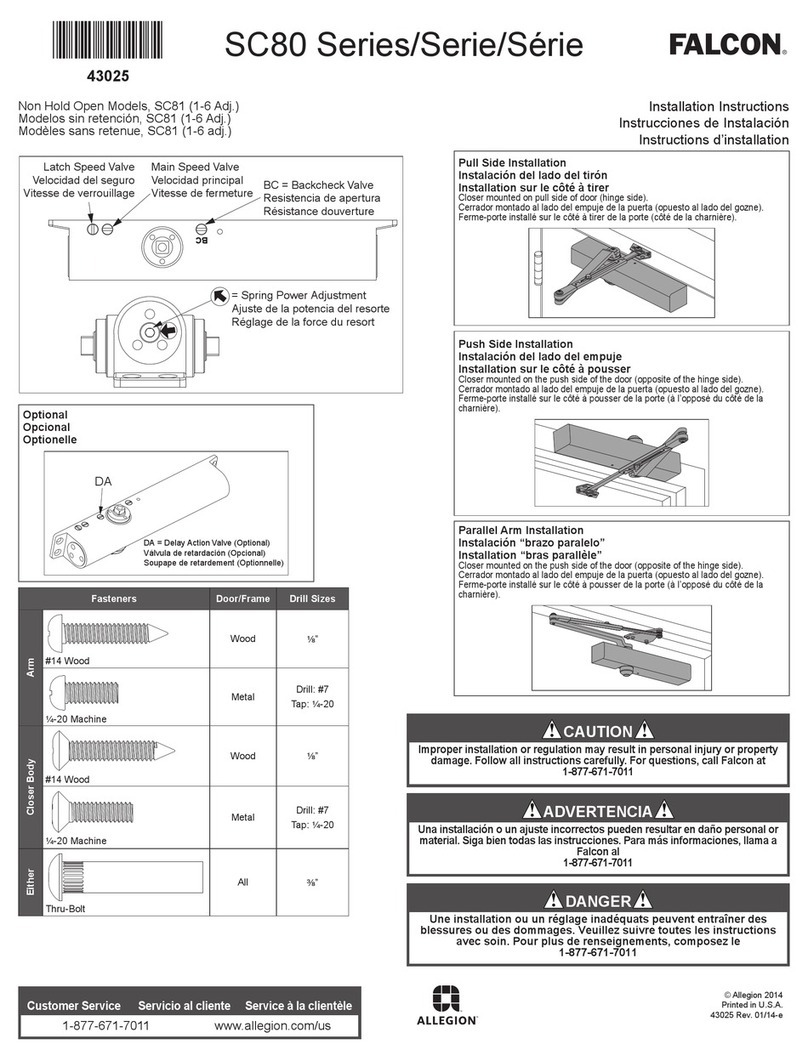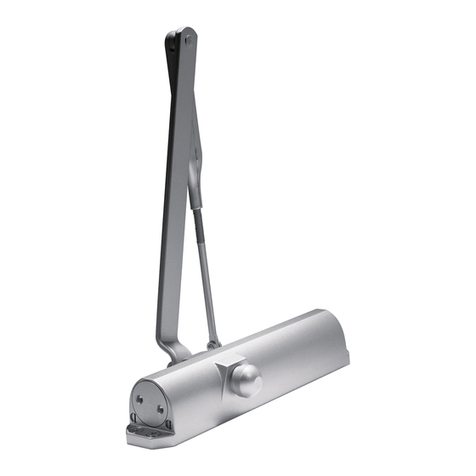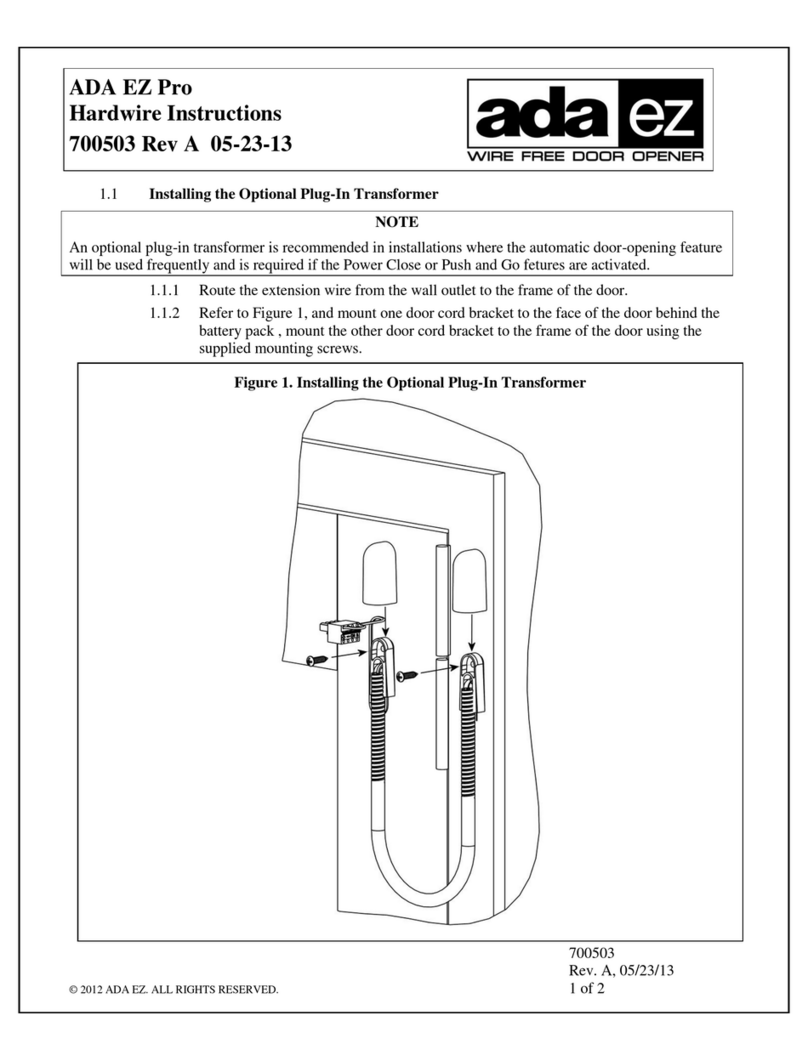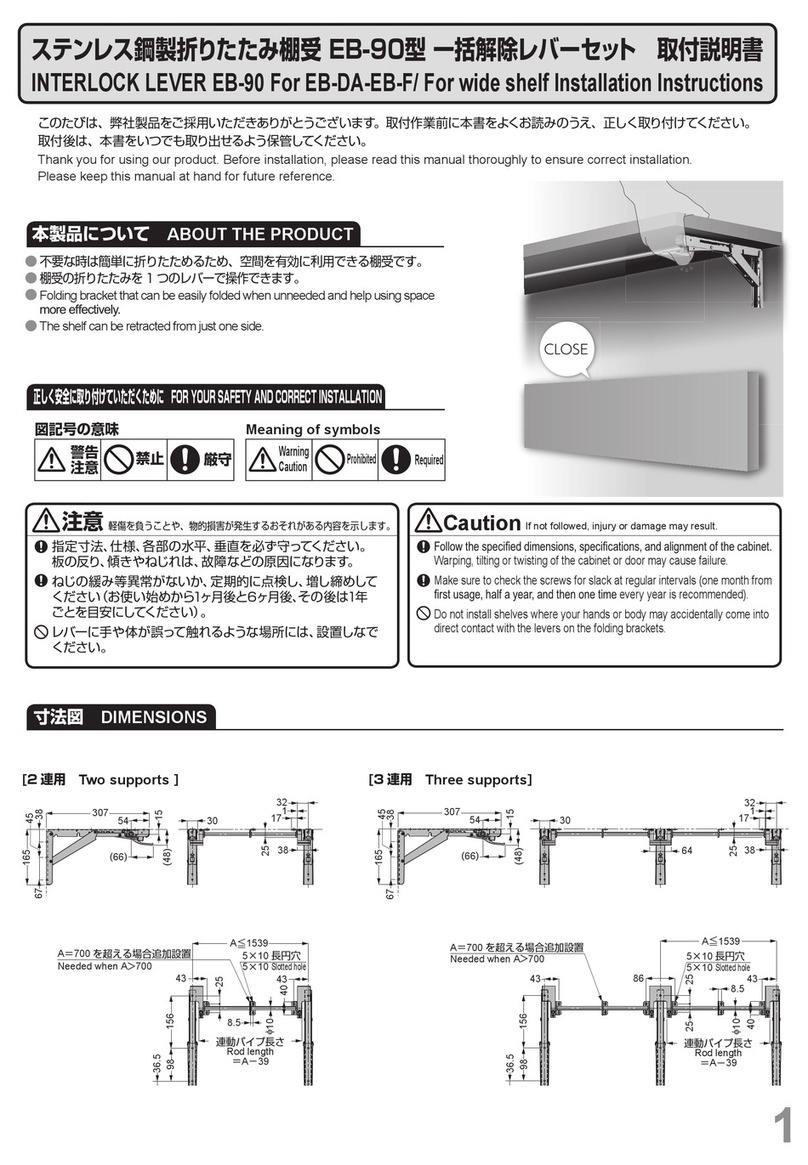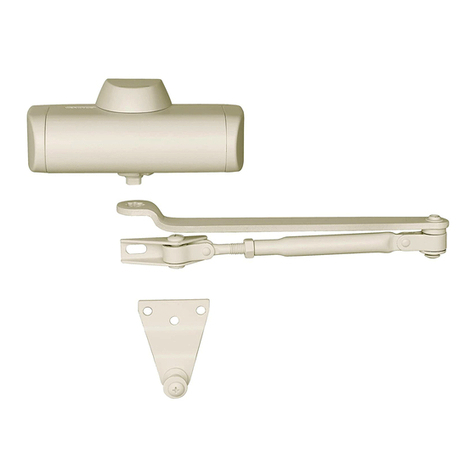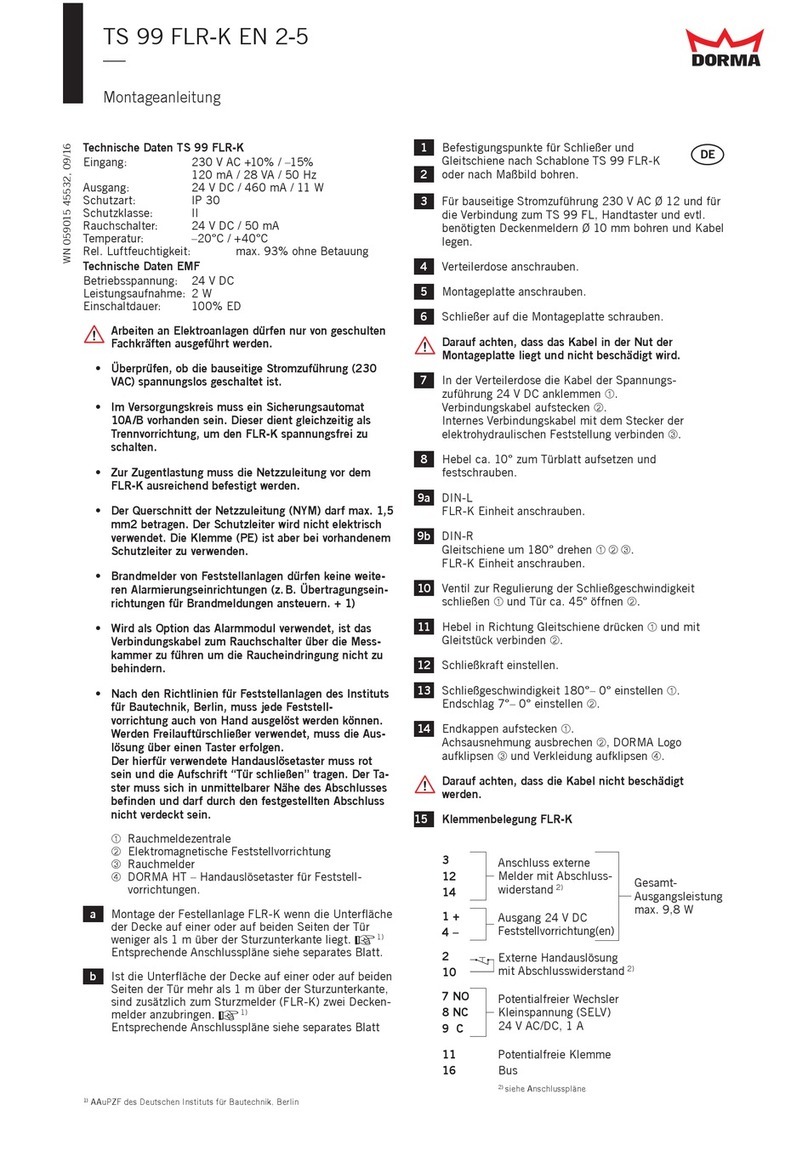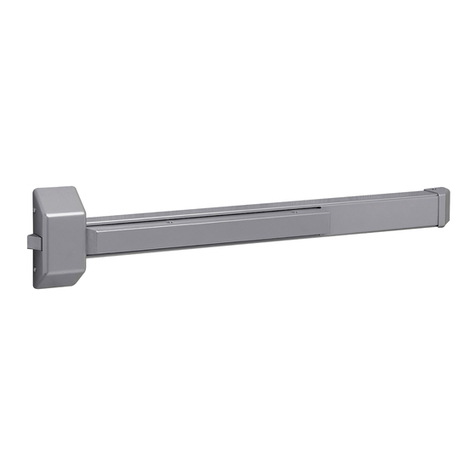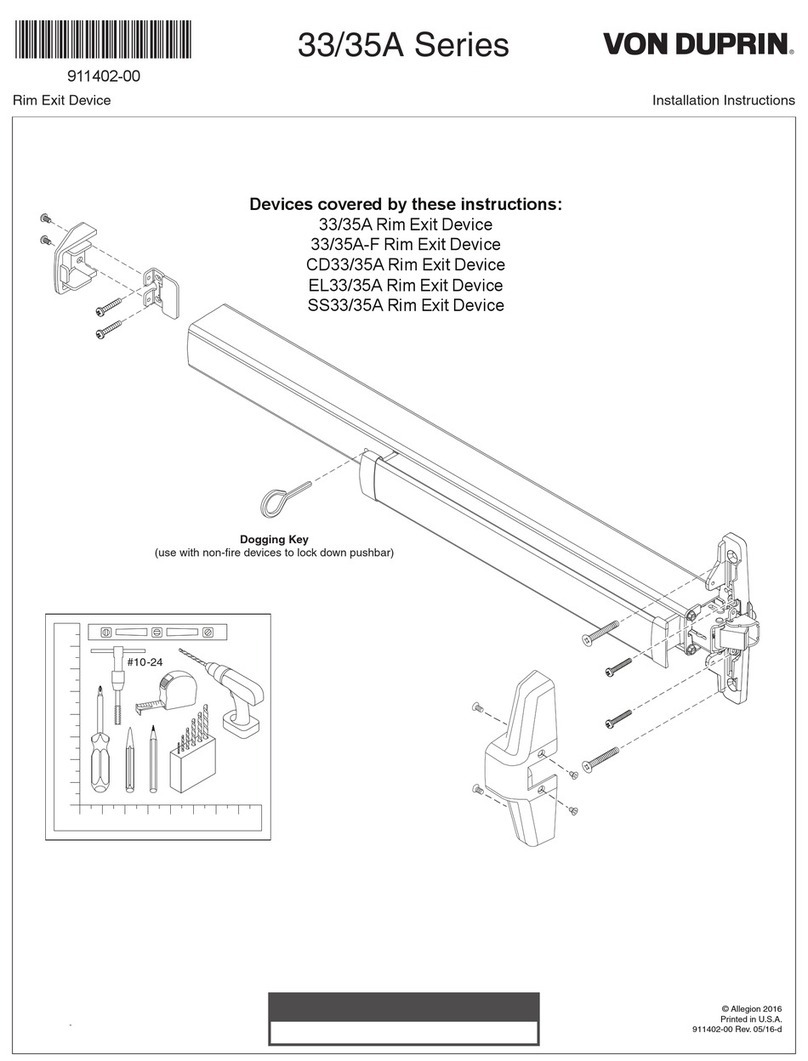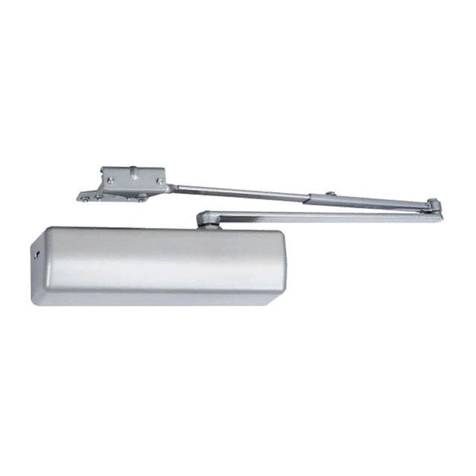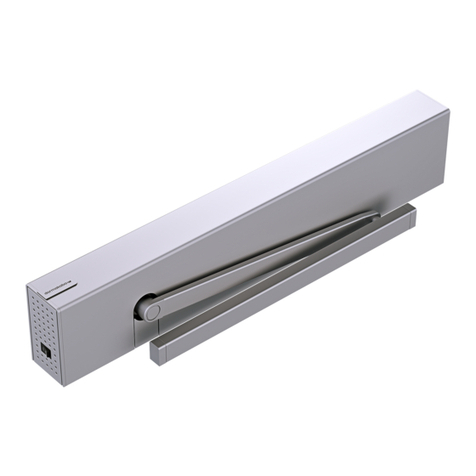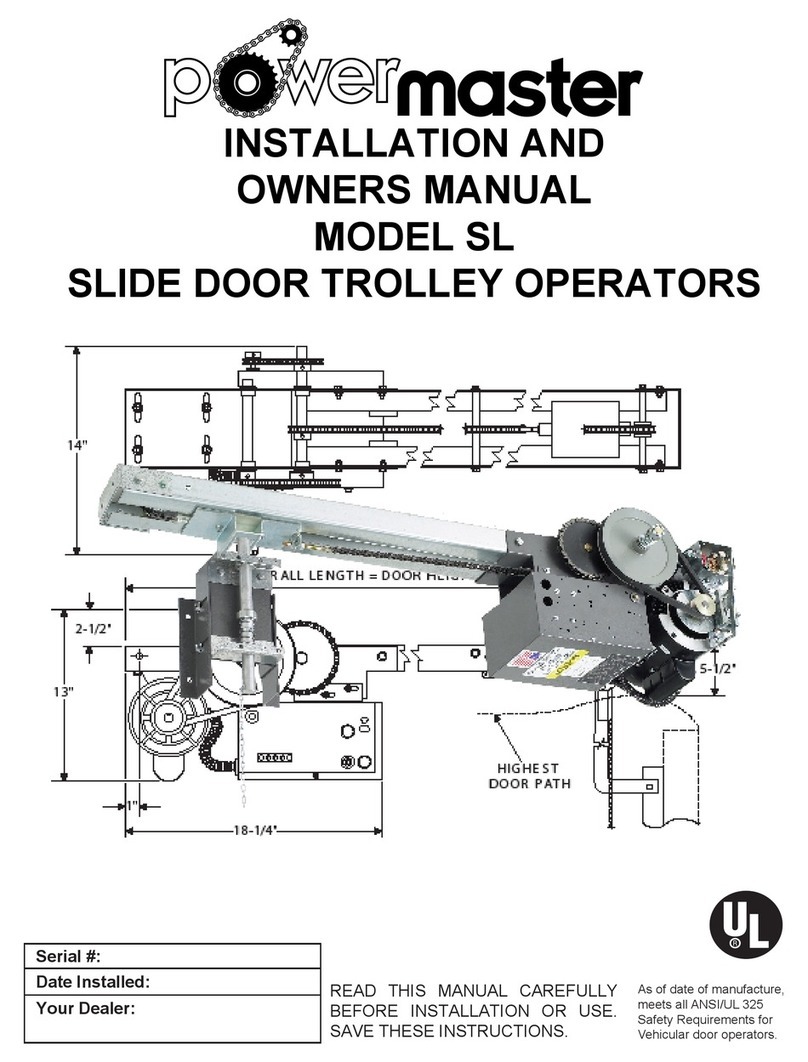18
The clutch serves to protect the door, the
electric operator and other equipment from
undue stress or damage caused by starting
forces and/or an obstruction to the door. It
should be set NO TIGHTER than is necessary
to smoothly and consistently move the door
throughout its full range of travel. When
properly set, it will slip freely if the door should
encounter an obstruction, and it should be
possible to stop the travel of the door by hand.
WARNING: BEFORE ADJUSTMENT, REMOVE
POWER TO THE OPERATOR!
CAUTION: NEVER COMPRESS CLUTCH SPRING
BEYOND POINT LIMITED BY THE DESIGN
OF THE OPERATOR OR REPLACE IT WITH A
HEAVIER SPRING.
1. Remove cotter pin from slotted hex nut and
clutch shaft.
2. Back o slotted hex nut until there is
insucient tension on clutch spring to
permit clutch to
drive door.
3. Tighten slotted hex nut gradually until there
is just enough tension on spring to permit
operator to move door smoothly, but to
allow clutch to slip if door is obstructed.
4. Be sure cotter pin is reinstalled each time
operator is tested for clutch adjustment
and that it is locked in place upon
completion of adjustment.
Due to changing conditions of the door
and normal wear, it may be necessary to
occasionally re-adjust the clutch to obtain
dependable operation.
WARNING: BEFORE DOING SO, BE CERTAIN THAT
THE DOOR IS IN GOOD WORKING CONDITION,
IS PROPERLY COUNTERBALANCED, AND THAT
THE CLUTCH IS NOT SLIPPING BECAUSE OF
LOOSE OR MISSING HARDWARE, BINDING IN
THE TRACK, RUBBING AGAINST THE DOOR STOPS, OR DEFECTIVE OR MISADJUSTED SPRINGS. ANY
SERVICE REQUIRED TO THE DOOR, DOOR SPRINGS OR DOOR OPERATOR MUST BE PERFORMED BY A
QUALIFIED PROFESSIONAL DOOR INSTALLER.
The clutch pad will wear during normal operation and should be replaced when it becomes
dicult or impossible to suciently tighten the clutch to obtain smooth operation of the
door when it is in good working condition. To replace the clutch pad, rst loosen the motor
mounting bolts and remove the V-belt, followed by the clutch adjusting nuts, spring and
clutch pulley. Check condition of V-belt before reassembly and replace if required.
RISK OF ENTRAPMENT THAT MAY
RESULT IN SEVERE INJURY OR DEATH!
DISCONNECT POWER TO THE OPERATOR
BEFORE SERVICING OR MAKING
ADJUSTMENTS. ENSURE DOORWAY
IS CLEAR BEFORE STARTING TESTING
OF UNIT.
WARNING
ALWAYS DISCONNECT POWER TO
THE OPERATOR BEFORE SERVICING,
CONNECTING ACCESSORY DEVICES
OR MAKING ADJUSTMENTS.
CAUTION
CLUTCH ADJUSTMENT
OPERATION AND ADJUSTMENT INSTRUCTIONS
IMPROPER ADJUSTMENT OF CLUTCH
SETTING COULD CAUSE ENTRAPMENT,
INJURY OR DEATH. SET CLUTCH
ADJUSTMENT FOR JUST ENOUGH FORCE
TO OPERATE THE DOOR RELIABLY, BUT
NO STRONGER. CONTACT A SERVICE
PROFESSIONAL TO CORRECT ANY
BINDING, STICKING OR OTHER DOOR
PROBLEMS. DO NOT OVERADJUST
CLUTCH SETTING TO COMPENSATE FOR
A POORLY WORKING DOOR.
WARNING
FIGURE 15




















